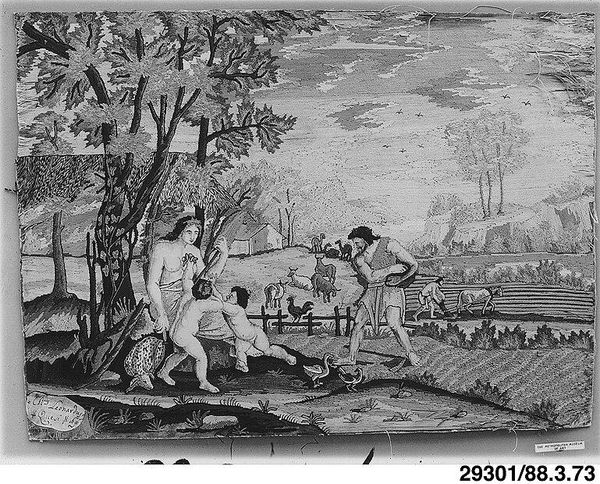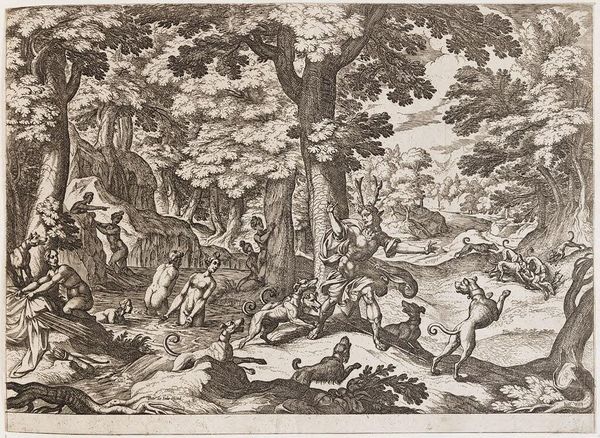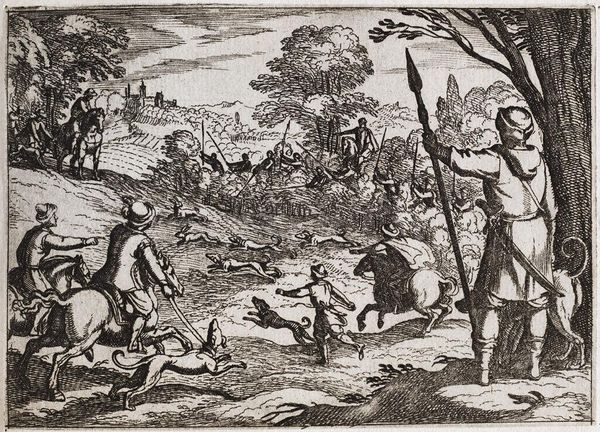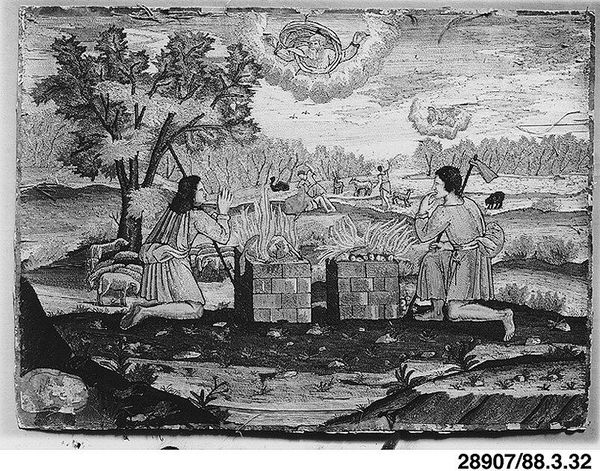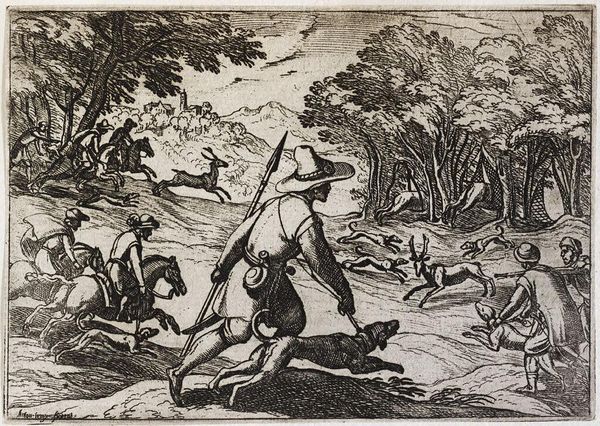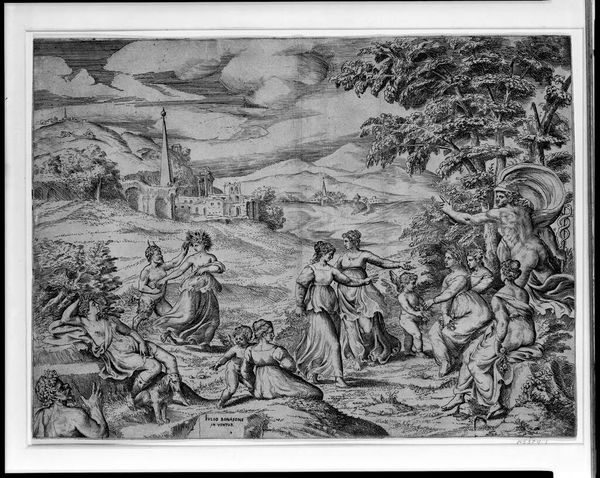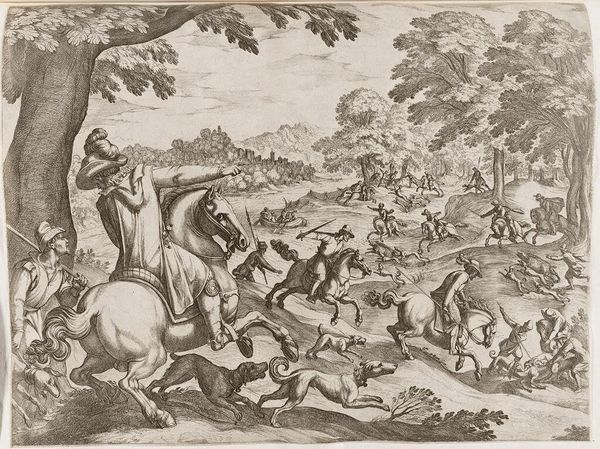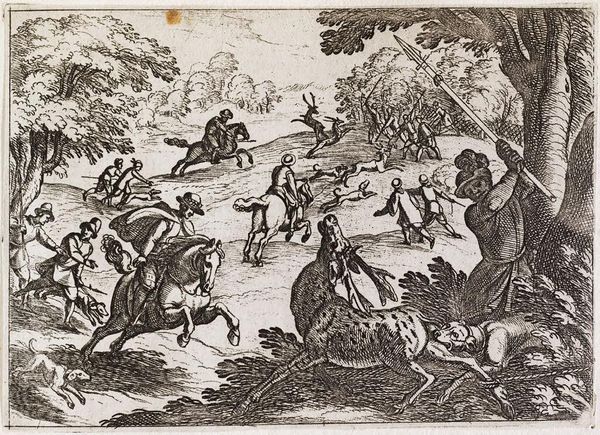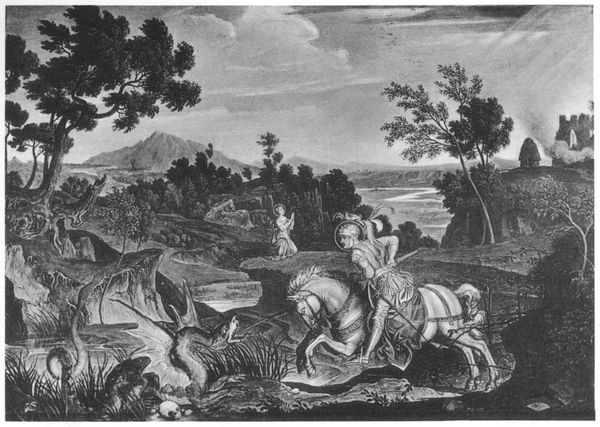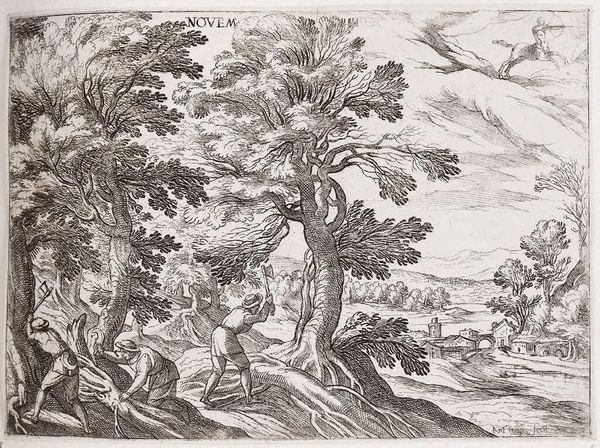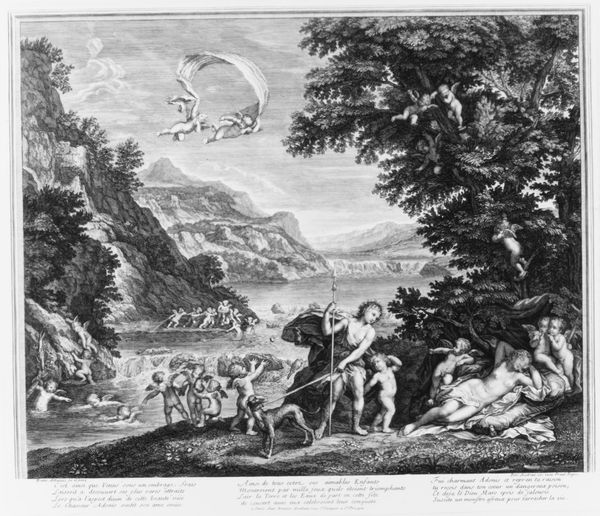
drawing, etching, paper, ink
#
drawing
#
narrative-art
#
animal
#
etching
#
dog
#
landscape
#
bird
#
paper
#
ink
#
genre-painting
Dimensions: L. 18 1/4 x W. 28 1/2 inches (46.4 x 72.4 cm)
Copyright: Public Domain
Editor: This is "Ostrich Hunt (Africa)" by Leonardus Quesi, dating from around 1685 to 1699. It’s an ink and etching on paper. There’s a real sense of movement and energy here with the hunters and animals, but also a slightly chaotic feeling. What stands out to you in terms of the visual structure? Curator: The dynamism you perceive arises from several compositional strategies. Observe how the artist contrasts textures - the meticulously detailed foliage versus the relatively smooth planes of the hills. This creates a visual rhythm, guiding the eye across the scene. Further, note the repetition of diagonal lines, particularly in the spears and the bodies of the animals. Do you see how this enhances the impression of frantic pursuit? Editor: Yes, definitely! And the stark contrast between the dark ink and the light paper emphasizes the frantic quality. But I’m also wondering about the sort of…flattened perspective. Curator: Precisely. The limited depth contributes to a sense of compression. This can be read as an intentional flattening of pictorial space to underscore the surface of the image, directing our attention to the interplay of line and form. The medium, etching, facilitates the level of intricate linear detail, crucial to constructing the narrative while simultaneously reinforcing the work’s inherent two-dimensionality. How might that affect its overall reception? Editor: I guess that rather than trying to create a realistic scene, it directs the focus to the artist’s technique, and the image as a constructed object? Curator: Indeed. It is a fascinating exercise in manipulating perspective and texture to create a vibrant, albeit compressed, scene. Focusing on these elements helps unlock the work’s structural complexity. Editor: I see so much more now. It's interesting how a seemingly simple image reveals intricate choices upon closer inspection. Thanks for that perspective! Curator: My pleasure! Paying attention to line, texture, and composition allows us to discern the artist's intent and engage more deeply with the artwork.
Comments
No comments
Be the first to comment and join the conversation on the ultimate creative platform.

